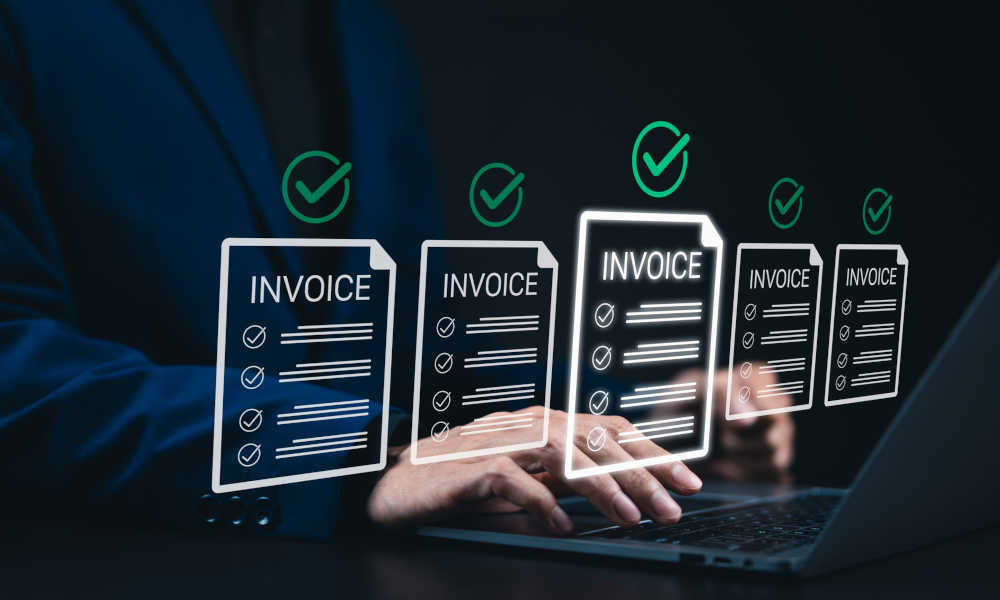Blog
Detecting and Preventing Invoice Fraud – How Qualified Electronic Seals Offer Protection
11.08.2025

Invoice fraud is not a rare occurrence – it's a widespread risk that affects businesses of all sizes as well as public institutions. Fraudsters use forged or manipulated invoices to illegitimately obtain funds, often resulting in substantial financial losses. Numerous cases and frequent media coverage highlight the threat and the urgency to act.
Here are two examples that show how quickly it can happen:
The Saxon Ministry of Social Affairs transferred €225,000 to fraudsters after receiving a fake invoice. The email appeared to come from a trusted address – but the bank details had been altered.
Source – futurezone.at
The municipality of Hagenbrunn in Lower Austria fell for a highly convincing fake invoice and transferred nearly €300,000 to online fraudsters. The deception was only discovered after the funds had already been transferred.
Source – derstandard.at
These cases make it clear: even experienced organizations can become victims if their invoice processing isn’t sufficiently secured.
What Is Invoice Fraud?
Invoice fraud refers to the deliberate attempt to deceive companies into transferring money to unauthorized third parties through falsified invoices. What makes it especially insidious is how realistic these fake invoices can look – often mimicking long-standing business partners or well-known service providers.
Fraudsters employ a variety of tactics, including:
- IBAN manipulation: A legitimate invoice is intercepted (e.g., via email), and the bank details are changed – the altered version appears authentic at first glance.
- Spoofing & fake sender addresses: Emails with fraudulent invoices are sent from addresses that look genuine, often with subtle differences like "company@example.co" instead of "company@example.com".
- Fake invoices from non-existent companies: Charges for services that were never ordered or delivered – particularly dangerous for large enterprises with high invoice volumes.
- Business E-mail Compromise (BEC): Attackers pose as executives and instruct employees to make urgent payments via email.
- Duplicate invoicing: A previously paid invoice is slightly modified (e.g., updated invoice date or number) and sent again to trick the recipient.
These methods exploit weak points in internal processes – such as time pressure, lack of checks, or automated workflows without plausibility verification.
How to Prevent Invoice Fraud
Organizations – both public and private – can take several important steps to reduce risk:
- Four-eyes principle
Invoices should never be approved by just one person, especially when the amount exceeds a defined threshold.
- Verify before paying
If an invoice seems unusual or unexpected, verify it by contacting the sender – use known contact methods, not those listed on the invoice.
- Check invoice details carefully
Do the sender, IBAN, service description, and amount match previous invoices? Are there inconsistencies in language or formatting?
- Watch for red flags
Misspelled logos, strange domains, or sudden pressure to pay are all warning signs. Even small amounts with short payment terms can be a scam.
Qualified Electronic Seal: Tamper Protection for Documents
A qualified electronic seal works like a digital company stamp – legally recognized, tamper-proof, and valid across the EU. It provides:
- Clear origin: The seal confirms that the document genuinely originates from the named organization.
- Tamper detection: Any change renders the seal invalid – and modified documents immediately recognizable.
- Legal certainty: Qualified seals are eIDAS-compliant, legally binding across the EU, and recognized by public authorities and contracting entities.
By sealing your digital invoices with a qualified electronic seal, you not only protect your customers and partners from fraud, but also ensure compliance with legal requirements for authenticity and integrity of electronic invoices – as mandated in § 11 UStG (AT), § 14 UStG (DE), and the GeBüV (CH).
Conclusion: Prevention Is the Best Protection
Invoice fraud is not an isolated issue – it’s a very real threat. That’s why combining technical safeguards with organizational measures is essential.
A qualified electronic seal provides a digital guarantee of authenticity for your invoices. It protects your stakeholders, strengthens brand integrity, and is a powerful tool in the fight against fraud.
Want to learn more about electronic seals?
Get in touch – we’re here to support you in securely digitizing your invoice processes.


